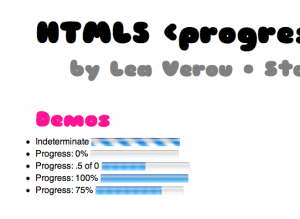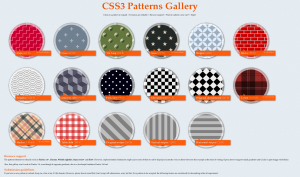Reading Time: 2 minutes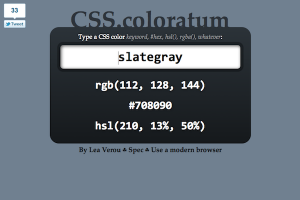 Whenever I wanted to convert a CSS named color to RGB, I used to open the CSS3 colors spec in a new tab, search in the page and copied the values. Every time it felt even more tedious. I didn’t want to search in long tables, I wanted to type the color somewhere and get the values back, in an easy to copy format. So, after yet another color lookup earlier today, I decided to scratch my own itch and do it myself.
Whenever I wanted to convert a CSS named color to RGB, I used to open the CSS3 colors spec in a new tab, search in the page and copied the values. Every time it felt even more tedious. I didn’t want to search in long tables, I wanted to type the color somewhere and get the values back, in an easy to copy format. So, after yet another color lookup earlier today, I decided to scratch my own itch and do it myself.
Of course, I didn’t plan to include a whole database of CSS colors in the website. My idea was much simpler: Use the named color to draw a rectangle in a <canvas> and then read the R,G,B values through ctx.getImageData().
I got the core functionality done in under 10 minutes, so I started adding stuff. I added a hex and HSL representation, I used canvas.toDataURL() to get a data URI of the rectangle and use it as a dynamic favicon*, I made the colors sharable and bookmarkable by using an old-fashioned hash. Also, I realized it actually supports any CSS supported color represenation by design, not just named colors.
Regarding the color conversions themselves, I took extra care to avoid redundancy. So values < 1 don’t have leading zeroes (.5 instead of 0.5) and when the hex color is in the format #xxyyzz it gets converted to #xyz. When it’s an RGBA color, it still converts it to hex, since those values will be supported in CSS4.
Since it’s for developers, I didn’t bother at all with fallbacks.
Cool stuff used:
- HTML5: canvas, autofocus, output, oninput event, hashchange event
- CSS3: gradients, media queries, box-sizing, background-clip, border-radius, shadows, RGBA
- ES5: Array#map()
- Selectors API
The reason the input’s border appears weird on Webkit is this long standing Webkit bug. Also, for some reason my nice dynamic favicons don’t display on Firefox, although they display fine in Webkit and Opera.
Happy color sharing! Let me know of any problems or suggestions you may have.
PS: In case you’re wondering about the domain, I’ve had it for ages for another project and I thought it was quite fitting.
*Thanks to @milo for giving me the idea of using a dynamic favicon
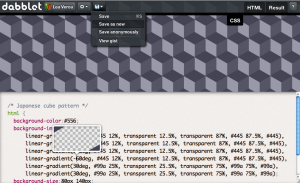 I loved JSFiddle ever since I first used it. Being able to test something almost instantly and without littering my hard drive opened new possibilities for me. I use it daily for experiments, browser bug testcases, code snippet storage, code sharing and many other things. However, there were always a few things that bugged me:
I loved JSFiddle ever since I first used it. Being able to test something almost instantly and without littering my hard drive opened new possibilities for me. I use it daily for experiments, browser bug testcases, code snippet storage, code sharing and many other things. However, there were always a few things that bugged me: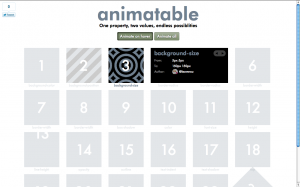

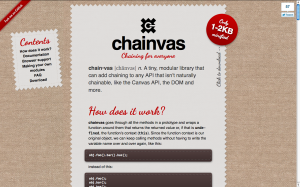
 Actually, while using Chainvas myself, I found it immensely more useful for chaining DOM methods and setting multiple element properties at once. Chainvas had a lot of potential, that most people were missing. And then it dawned on me: I should modularize the library! A generic chaining library at its core and additional modules for making the different APIs chainable. And I did it.
Actually, while using Chainvas myself, I found it immensely more useful for chaining DOM methods and setting multiple element properties at once. Chainvas had a lot of potential, that most people were missing. And then it dawned on me: I should modularize the library! A generic chaining library at its core and additional modules for making the different APIs chainable. And I did it.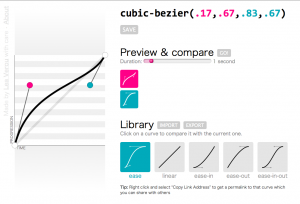
 Whenever I wanted to convert a CSS named color to RGB, I used to open
Whenever I wanted to convert a CSS named color to RGB, I used to open 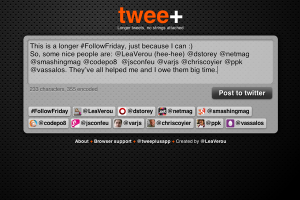 As some people that have been following me for a while know, the 140 character limit on twitter bugs me a lot sometimes, and I’ve tried to find
As some people that have been following me for a while know, the 140 character limit on twitter bugs me a lot sometimes, and I’ve tried to find 